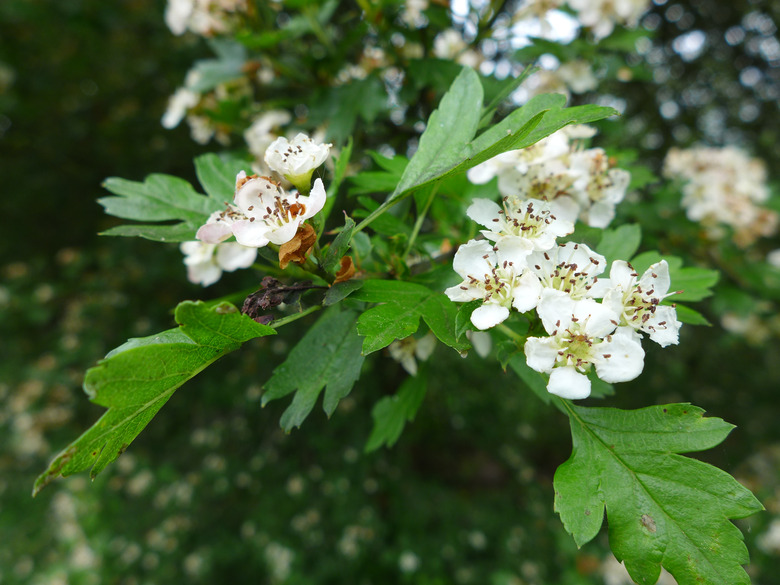Flowering Trees For Ohio
Ohio lies within a humid continental climate zone, which means four distinct seasons, hot summers and cold winters. Gardeners often plant flowering trees to add color and ornamental interest to landscapes. If you live in Ohio, choose trees according to blossom color, bloom time, mature size and intended use. Choose among the small flowering trees in Ohio if you have a smaller landscape. Various flowering tree varieties perform well, including a number of Ohio native trees.
**Some flowering trees for Ohio are:**
Flowering trees in Ohio
| Tree size | Tree name | Scientific name | USDA zones |
| Small | Allegheny serviceberry tree | Amelanchier laevis | 4-8 |
| Small | Eastern redbud tree | Cercis canadensis | 4-9 |
| Medium | Flowering dogwood tree | Cornus florida | 5-9 |
| Medium | Washington hawthorn tree | Crataegus phaenopyrum | 4-8 |
| Tall | Tulip tree | Liriodendron tulipifera | 4-9 |
Small Flowering Trees in Ohio
Allegheny Serviceberry Tree
The Allegheny serviceberry tree (Amelanchier laevis, USDA zones 4-8) belongs to the rose family (Rosaceae) and is one of the best small trees to plant in Ohio. The Lady Bird Johnson Wildflower Center notes that this tree is also easy to grow.
When mature, this small flowering tree ranges from 15 to 25 feet in height and feature smooth, gray bark. The bluish-green leaves turn red or orange shades in the autumn. White flower clusters appear before the leaves emerge and give way to edible, black, purple or red berries.
The Allegheny serviceberry grows best on acidic, loamy soils in part shade to full sun locations. Gardeners often plant this flowering tree in moist woodlands and swamp margins.
Eastern Redbud Tree
Another of the small flowering trees in Ohio is the eastern redbud (Cercis canadensis, zones 4-9), a member of the pea family (Fabaceae). The Ohio State University Extension rates the redbud as an outstanding flowering tree. Mature height ranges from 15 to 30 feet. This native Ohio tree features maroon to purple bark, heart-shaped, green foliage and clusters of red or purple flowers that appear from March through May.
This redbud species likes moist, slightly acidic to slightly alkaline soils in full sun to partial shade locations. Ohio gardeners often use the eastern redbud in naturalized settings, moist woodlands and stream margins.
Medium-Size Flowering Trees in Ohio
Flowering Dogwood Tree
Among Ohio native trees and shrubs is the flowering dogwood tree (Cornus florida, zones 5-9), which naturally grows in Ohio thickets and woods. This Cornaceae plant family member features showy, white flowers from March through May, followed by vibrant red berries that attract birds and wildlife. The green leaves turn attractive red to reddish-purple tones in autumn. Mature flowering dogwood trees range from 20 to 40 feet in height.
Anthracnose and borer infestations often occur. This dogwood species likes rich, acidic soils in partial-shade locations. The flowering dogwood generally performs well planted along streams or rivers.
Washington Hawthorn Tree
The Washington hawthorn (Crataegus phaenopyrum, zones 4-8), a native Ohio tree belonging to the rose family (Rosaceae), reaches up to 30 feet in height. This hawthorn species bears long thorns, silver bark and triangular leaves that turn vibrant reds, oranges and yellows in the autumn. The fragrant, white blossoms appear in June, followed by red fruit that persists well into winter.
Washington hawthorns sometimes suffer from various rust diseases. Ohio gardeners often plant these flowering trees along rocky woodland margins and stream banks.
Tall Flowering Tree in Ohio
Tulip Poplar aka Tulip Tree
The tulip tree (Liriodendron tulipifera, zones 4-9), also called the tulip poplar, belongs to the magnolia family (Magnoliaceae) and bears star-shaped, green leaves that turn bright golden-yellow in the autumn. Tulip trees bloom from April through June, featuring large, tulip-like flowers in attractive yellow, orange or green shades.
Scale and aphids sometimes infest these trees. Mature tulip trees reach up to 150 feet in height and prefer moist, acidic soils in partial shade to full sun locations. This native Ohio tree works well in larger lawns, parks and moist woodland margins.
